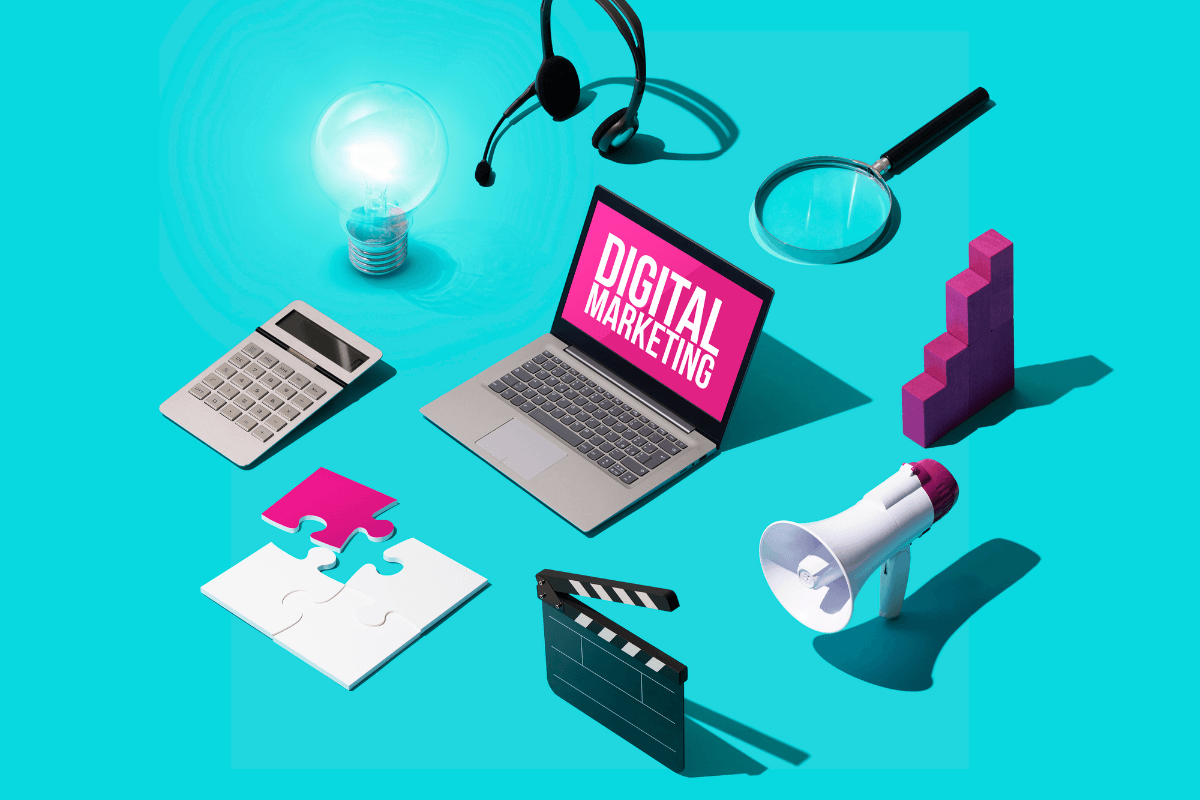How to Build a Digital Marketing Strategy

Empowering your digital presence can be extremely tough if you aren’t sure where to begin. A robust strategy is a make-or-break factor in your online success, so it’s crucial to start off right.
Learn why a proper digital marketing strategy is vital and what steps you need to take to ensure your business packs a punch in the online space.
Why you need a digital marketing strategy
The reasons why you need a digital marketing strategy in 2022 and beyond should really go without saying. But let’s explore some of the crucial reasons as to why it could be incredibly challenging to find business success without a digital strategy in this day and age.
1. Getting a competitive edge
Sure, you can work offline only, especially if you have an established client base who regularly come to your brick-and-mortar location. But with competition in literally every niche becoming fiercer by the minute, are online platforms really something you want to miss out on?
After all, the vast majority (93%) of consumers do research online before buying something. If you want to increase sales, make sure to leverage that.
2. Wider reach & brand awareness
Considering the above, you can obviously also count on expanding your customer base when you’re discoverable online. You don’t necessarily need a complex website. A simple one optimised for search engines will do.
Digital marketing allows you to reach not only the customers you’re familiar with faster. It also enables you to research new audiences and create new buyer personas.
3. Better customer relationships
Thanks to digital channels, you can connect with your customers more deeply. You can also provide various kinds of customer service that go beyond just phone calls or e-mails. This improves your reputation as a business and positions you more firmly in the market.
What should a digital marketing strategy include?
Depending on many things, such as your business size, industry and goals, a digital marketing plan can have various components.
Here are some of the common elements a digital marketing strategy can include:
• Email marketing
• Organic social media
• Paid media (paid ads on search engines, social platforms and different websites)
• Analytics
• Video marketing
• Content marketing
• Search engine optimisation – SEO
• Online events (webinars)
• Conversion rate optimisation – CRO
• Online affiliate marketing

How to build a digital marketing strategy
1. Understand your target audience/buyer persona.
You can’t go creating a digital marketing strategy before knowing exactly whom you’re building it for. Whether you’re an already established business (offline) or a start-up, you need to have an idea of your target audience.
For already existing businesses, it may be a bit easier, since there’s at least experience to look at. You’ve also probably already observed your previous customers and clients and put together some sort of ‘data’ on them. From there, you can define some demographics of your existing customers and see which ones are dominant.
These may not be particularly extensive, but they do provide a start. Start-ups, on the other hand, are going to have to use their vision.
Who do you imagine will buy from you and play into your marketing goals? Are they young adults, teenagers, or middle-aged people? Which gender will be prevalent? What could their educational background and professions be? What language(s) do they speak?
Where do they live? What would their purchasing behaviour look like (e.g. on what days do they buy and how much do they spend)?
2. Set clear SMART goals.
If you don’t know what you really want to achieve, then you are missing the basis of your strategy. You need to set goals, more specifically SMART goals.
SMART is an abbreviation for specific, measurable, achievable, relevant and time-bound. Specific means you set business objectives and KPIs that are exact as possible. For example, you are aiming to grow your annual revenue by 4%.
Measurable simply means using appropriate tools and techniques to check whether you’re on track with your goals. Achievable would mean that you’re not getting carried away by aiming too high. Time-bound means you set a specific timeframe within which you want the goals to be accomplished.
It’s vital that your goals be as clear as they can in this stage. This helps everyone involved stay on track with both individual tasks and the big picture.
3. Evaluate your budget and resources.
As soon as you have an outline of what you’re looking to accomplish, take a close look at the budget you’re willing to allocate. Also assess your tech stack (you can do a tech audit) and the human resources within your business.
Sometimes your IT infrastructure will need upgrades or you might need to expand personnel or their skillsets. That’s an important part of making sure you’re all set for your digital endeavours, so these investments are always worth it in the long run.
4. Pick specific methods to invest in.
There may be a ton of digital marketing techniques you can opt for, but don’t try doing more than you can (or realistically should). Firstly, it's likely that your budget won't be able to cover all of them. Secondly, it’s counterintuitive. If you’re doing ten things little by little, it won’t even be nearly as effective as doing three things properly and thoroughly.
For example, you can combine SEO, PPC/paid media and e-mail marketing. Or you can go with social media marketing (paid and organic) and video marketing. In essence, once you’ve evaluated your current state, budget and business goals, you can also pick the methods most suitable for you.
If in doubt, you can always consult digital experts who will help with your strategy.
5. Track your performance.
Whichever strategy and techniques you choose, make sure you track the performance from day one. Depending on what you opted for, this can be through Google Analytics, Semrush, e-mail marketing tools like ActiveCampaign, etc.
For SEO, you’d be tracking positions and how keywords are performing. For paid ads, you’d track conversion rates, for e-mail marketing click-through rates, etc.
6. Look for improvement opportunities.
Any marketing endeavour should be considered an ongoing effort rather than a one-and-done deal. If you follow all the steps outlined above, you should have a solid strategy that you can track, tweak and bring up to standard.
Think of it as a case of continuous improvement rather than a fixed strategy. This is especially relevant when you consider that the digital world changes so much so often.
The bottom line
There are no two identical digital roadmaps. Each strategy needs to be tailored to each business specifically. If you need help creating one for yours, feel free to reach out to us. The digital experts at GRM Digital are always happy to help you skyrocket.
